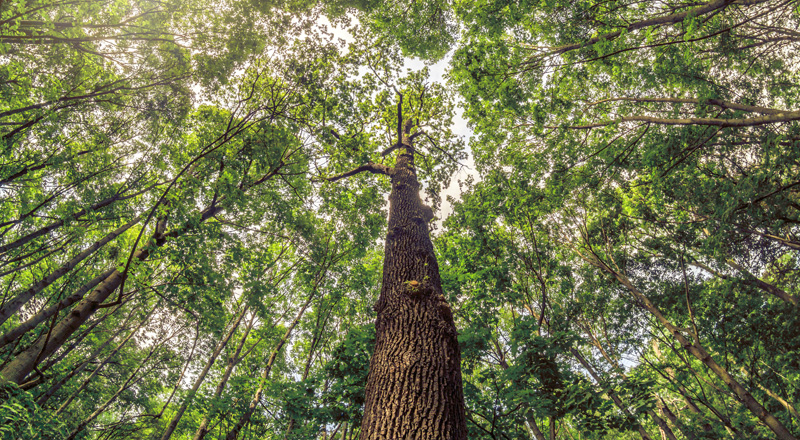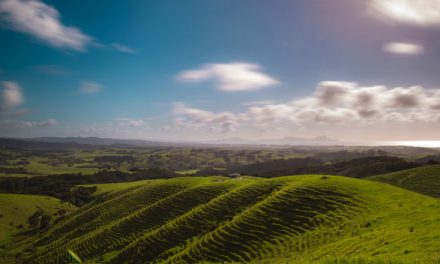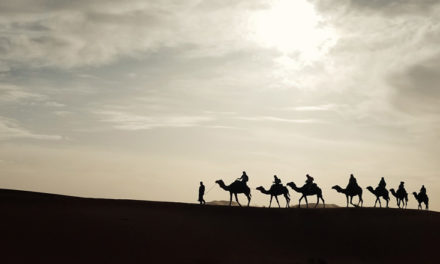Reach For The Light
Tena tātou katoa e te iwi mīhana… (Greetings to all the people in mission),
This month’s whakataukī (proverb) is: “He mano rau, he mano ara, whaia te ara o te kareao.” (A thousand leaves, a thousand branches, follow the path of the supplejack vines). The supplejack (kareao or ripogonum scandens) is a rainforest vine native to Aotearoa New Zealand. It begins life as small sapling searching for some support. When it connects to a shrub or tree, it clings and grows upwards to access sunlight, after which it grows branches and leaves. It advances at a rate of about 5cm per day, climbing high into the canopy of dense forests. Cut down, it has handy uses as a type of rope or binding, wicker, medicine, or even food in its early stage of growth, but forests woven with the stuff are a nightmare for humans to traverse! I spent countless hours as a child playing alone in a native bush gully down the back of the farm, living out made-up stories, swinging from the vines, and hacking them with my bowie knife in an attempt to do something creative with them afterwards (hint: they don’t make good bows for arrows).
I have been thinking a lot about trees lately, and what we can learn from them. I am currently reading “The Sound of Life’s Unspeakable Beauty” by master luthier Martin Schleske, a famed violin maker. It makes for stunning devotional reading. Consider this lesson learned from trees…
A resonant life demands wisdom and courage. We must discern which things are dead and separate ourselves from them. An honest heart recognizes the dead limbs that are robbing us of strength and self-worth. For the tree, this wisdom is self-evident, but the myriad of options granted by our freedom makes our journey much more complex. Nothing in our life is self-evident. We must learn to stretch ourselves up toward the light in every area of life, through every branch, twig, and shoot of our existence. This is why Jesus says: “I am the light of the world. Whoever follows me will never walk in darkness but will have the light of life” (John 8:12). (Pages 24-25, Kindle version).
Schleske here is speaking of the ‘singing trees’, spruces found high in the Bavarian Alps that make the best material for instruments because of the resonance created by their challenging environments and long slow growth. Survival depends on the ability to find water by its roots and light by its leaves, just as the supplejack and every other plant does. Surrounded by a thousand leaves and a thousand branches, follow the path of the supplejack: to the light.
Schleske later elaborates on this principle in wise application…
Now that the seedling has pushed its roots into the ground, the life within it begins to emerge. The leaves are the next to unfold. Here is another lesson about communal life, one that seems to contradict common sense. Roots not only nourish the tree but need nourishment from the leaves as well. That is the two-way system found in all wooden trunks: in the wood’s vascular tissue, water and mineral nutrients climb up out of the roots. A sugar solution in turn travels from the top, into the outer layer of the bast fibers, and back down to the roots.
This process describes the secret of a truly Spirit-filled community. If the roots were to keep the water all to themselves without passing it on, that would be the death of the leaves; by the same token, if the leaves were to keep the light all to themselves and not pass it on, the result would be the death of the roots. To take but not to give is a form of suicide. When the leaves allow the roots to die, or the roots the leaves, they are killing themselves. (Pages 36-37 Kindle version)
Is that not a wonderful parable of body-life in-Christ for our learning?! The Apostle Paul provides similar encouragement throughout his epistles, as do the other New Testament writers. The lesson of the tree (cf. Matt. 24:32) in this case is that we are to be intimately interdependent in all our glorious diversity. This is a condition that I now refer to as our “integrated singularity” in-Christ, through our covenantal allegiance to him, empowered by the Holy Spirit. Being one people, an integrated singularity, is captured in the Māori concept of “kotahitanga”. I considered the significance of kotahitanga and koinonia in an article published in the International Review of Mission [Issue 110.1 (412)] back in May 2021. For a much shorter development of the missions significance of being an integrated singularity as a primary form of witness to new creation in-Christ, the transcript of my contribution to a recent Churches Together in England webinar can be accessed from my online archive here.
In Romans 12, Paul shifts from establishing all that God has done for us in Christ (Romans 1-11) to what is tantamount to ‘how then shall we live’ (Romans 12-15, or 16 if you count his greetings as a real-life demonstration of the way to live in harmony as a culturally diverse people). I think an ‘interpretive key’ here is Romans 12:6, “In his grace, God has given us different gifts for doing certain things well.” In the deceptively simple system of a plant, leaves photosynthesize and roots draw mineral rich water, both depend on each other for their very survival — as the branches are dependent on the vine’s root system (cf. John 15).
Loving one another in mutual generosity is the ‘logical’ expression of our worship of God.
Romans 12 begins with a majestic explanation of true, rational, reasonable, logos-formed (Greek = logikos) worship (Romans 12:1c). Majestic, but woefully misunderstood by and large. As I am compelled to point out these days, Romans 12:1-2 has very little to do with our private devotional life or public liturgies (as wonderful as those things can be); rather, it is entirely focused on our communal life as an integrated singularity—Christ’s holy community. Our living sacrifice is our yielding to one another in humility as our acceptable response to all that God has done in Christ, giving space for others to make their contributions (Paul refers to this as kenosis in Philippians 2 with the example of Jesus “giving up” His privileges as God). Loving one another in mutual generosity is the ‘logical’ expression of our worship of God. In this way we are not following the pattern of this world that seeks to only divide and conquer (the antithesis of being an integrated singularity), but as we learn to learn from one another we will be transformed because our relationships shape the very way we think (as the science of interpersonal neurobiology has now well established). Through this process we discover God’s good, pleasing and perfect will: that we be one (John 17, Psalm 133, etc. etc.). The rest of Romans flows on from this pivot. In short, Paul is demonstrating how we are meant to co-create new creation as an integrated singularity in-Christ.
If you caught the echoes of John 14-17 in all of that, you are following the path of the alpine ‘singing’ spruce, and of the supplejack, to the light. For the light is the truth that once and for all Christ’s death and resurrection has cast down the barriers that divide us because of our differences (Ephesians 2:14) and as we keep in step with the Spirit (Galatians 5:25), we will keep the unity of the Spirit through this bond of peace (Ephesians 4:3) for we are one (Ephesians 4:4ff)—an integrated singularity.
And, brothers and sisters, here’s the missions point: because of this, the world will believe (consider credible) and know (personally experience) that e te matou Matua e te rangi (our parent in heaven) lovingly sent the Son to usher in new creation—a peace that the world cannot give. This is what reaching for the light looks like. This is the gospel. This is what digging our roots deep into nutrient water of life is all about. It is a holy communion—an integrated singularity in-Christ.
So let’s drop all the dead limbs and leaves, that stuff that ruins relationships, saps us of our true strength and diminishes our unity. Let’s not focus on the thousand leaves and branches around us that block out the light. Instead, let’s continue reaching higher where we can bask in the goodness of God radiating through the grace given to each of us. That’s the light of life that will enable us to participate well as we #stayonmission.
Arohanui ki a koutou e haere ana ki te ao (love to you all as you go into the world),
Jay







